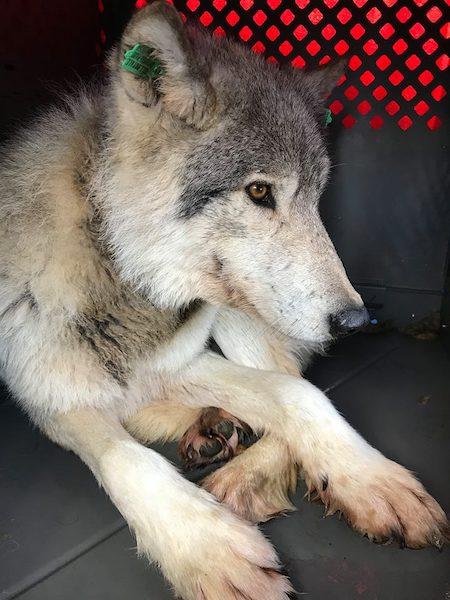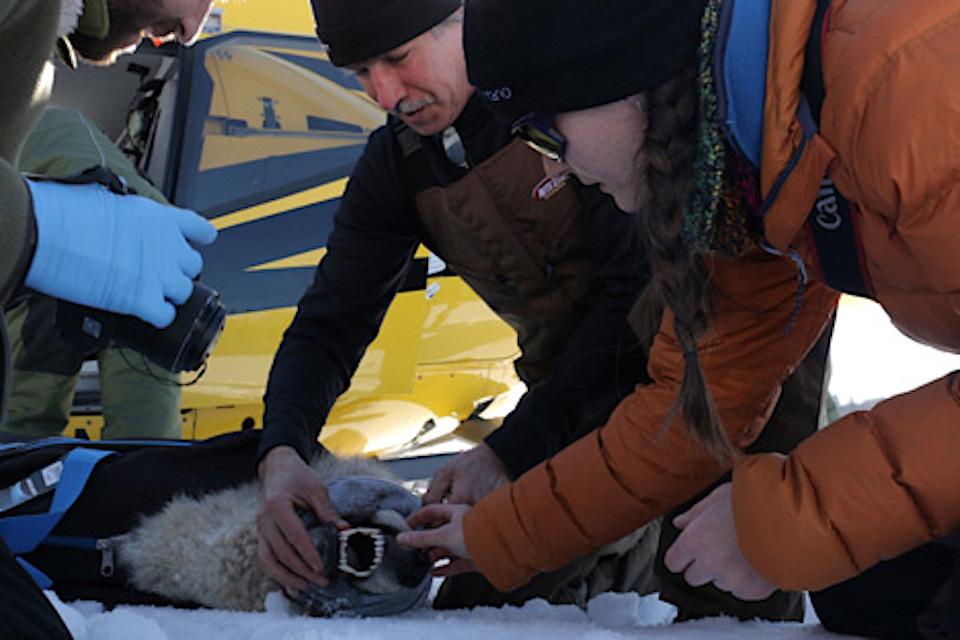
This wolf captured on Michipicoten Island was headed for Isle Royale National Park/NPLSF, J. Graham
At least four wolves captured on a Canadian island in Lake Superior were headed Saturday to Isle Royale National Park in the United States.
The four were caught Friday on Michipicoten Island, where they were thought to face starvation as their main prey, caribou, no longer existed there.
"Three males and one female were captured, with one male weighing 99 pounds," according to the National Parks of Lake Superior Foundation. "The wolves ranged from poor to good condition, and all were deemed suitable for transport to Isle Royale National Park, but are being held overnight due to darkness and air transport availability."
Isle Royale wolves have been in decline for more than a decade, due to chronic inbreeding. There was hope that "ice bridges" that formed between the Lake Superior island and the Canadian mainland during the winter of 2013-14 would enable wolves to arrive from Canada with new genes. But no new wolves reached the island, while one female left and was killed by a gunshot wound in February 2014 near Grand Portage National Monument.
In recent years, park managers have discussed wolf management on 209-square-mile Isle Royale with wildlife managers and geneticists from across the United States and Canada, and have received input during public meetings and from Native American tribes of the area. Those discussions examined the question of whether wolves should be physically transported to Isle Royale, in large part due to concerns that a loss of the predators would lead to a boom in the moose population that likely would over-browse island vegetation.
Under the plan the National Park Service adopted last year year, up to 30 wolves are to be set free at Isle Royale over the next three years in a bid to build genetic diversity into the park's wolf packs. In late February, the Ontario Ministry of Natural Resources and Forestry successfully transferred four wolves to Isle Royale.

SUNY Professor Jerry Belant lending a hand to Ashley McCleran to conduct a field check of female wolf/Photo courtesy of National Parks of Lake Superior Foundation, J. Graham.
If this weekend's effort to move the six wolves that were on Michipicoten Island succeeds, the number of predators relocated to the park since last fall would stand at 12. Eight previously had been moved there -- four in the fall, and four this winter -- but one died from pneumonia soon after being released and another left the park via ice bridge last month and headed to Minnesota where she had been captured.
According to a report Friday evening from the foundation, the wolves on Michipicoten Island "had banded into small packs, making capture less disruptive to non-targeted wolves. The alpha female was sighted and appears to be in good health running with two other wolves"
Efforts were to resume Saturday to capture the alpha female. The four wolves captured Friday were expected to make the journey across Lake Superior on Saturday to arrive on Isle Royale in the late afternoon.

The red balloon shows where Michipicoten Island is in northeastern Lake Superior, with Isle Royale National Park to the west/Google Earth



Add comment